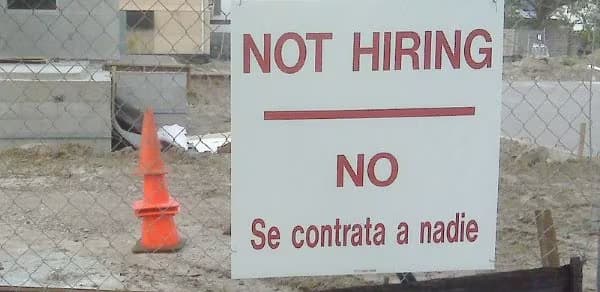Construction’s downturn leads to consolidation of workforce

As part of our broader modelling of industry and regional economic activity, we have recently updated our estimates of construction industry employment, along with forecasts out to 2030. And after 13 years of an expanding workforce, the near-term prospects for construction are challenging.
Stats NZ’s Monthly Employment Indicators show that filled job numbers for construction over the last year recorded the largest total decline in employment, and the third-largest decline of any industry in percentage terms, behind information media and telecommunications, and administrative and support services. This downturn has fed into our estimate for a 3.5% decline in construction employment for the year ended March 2025, which would be the largest annual decline since 2009/10. Downward pressure on job numbers is likely to persist throughout 2025, although pressures across the different subsectors in the construction industry are mixed.
In the residential space, new dwelling consent numbers have stabilised since mid-2024 at 33,000-34,000pa. Some businesses are reporting increased enquiry levels and more stable sales activity, which is an improvement from the universal pessimism that dominated last year, but the signs of better times are not being enjoyed by everyone. Furthermore, with the estimated peak in completions of new dwellings coming as recently as March last year, almost two years after consents started falling, the translation of more stable consent numbers into steadier activity levels could still take some time to manifest. Some people are optimistic about an upturn later this year, while others think that hopes of a pick-up are premature and that the market’s recovery will be delayed further.
Whereas weaker residential activity levels have been a clear contributor to falling job numbers throughout 2024, non-residential activity has lagged the rest of the economic cycle and only entered its downturn late last year. After adjusting for building cost inflation, the annual volume of non-residential consents has fallen 17% since its peak in July 2023. Fiscal constraints and weak economic conditions mean that both public sector and private sector activity are being heavily affected, meaning that firms operating in the non-residential construction space will come under pressure to cut worker numbers throughout 2025.
Fiscal constraints are also showing through in infrastructure outcomes – for now. A lack of projects coming through is putting consulting engineering firms under pressure, resulting in job numbers being cut, and raising concerns about the expected pipeline of infrastructure work later this year. At the same time, the word around Wellington is that the government is laser-focused on getting projects underway by the end of this year and continuing that momentum throughout 2026, thereby being able to point to the “shovels in the ground” as evidence that it is delivering on its promises, rather than just talking about getting stuff done.
Taking these various pressures into account, we expect construction employment for the March 2026 year to be down 4.4% from the March 2024 year. This result would take employment in the industry to its lowest level since 2021/22 (see Chart 1).
Although this decline in job numbers is a sizable one, it represents less than half the 9.4% fall in construction employment that occurred between 2008 and 2011 following the Global Financial Crisis.
From 2026 onwards, we expect construction employment to track broadly sideways. More stable demand conditions across most of the construction industry should reduce financial pressure on businesses. However, at this stage we see limited scope for an upturn in employment, given that firms will tend to have retained staff as much as possible, and they are therefore likely to still be operating with some spare capacity. The biggest upside risk to this flat employment outlook between 2026 and 2029 comes from the civil sector, given the widely recognised infrastructure deficit faced by New Zealand. Although current infrastructure work levels appear to be soft, the government’s push to increase spending, enable new funding mechanisms, and reduce regulatory barriers has the potential to drive faster growth in activity and employment over the medium term.
- Not Hiring by Bart Everson. Copyright 2009. Licensed under CC BY 2.0.
 Gareth Kiernan
Gareth Kiernan




